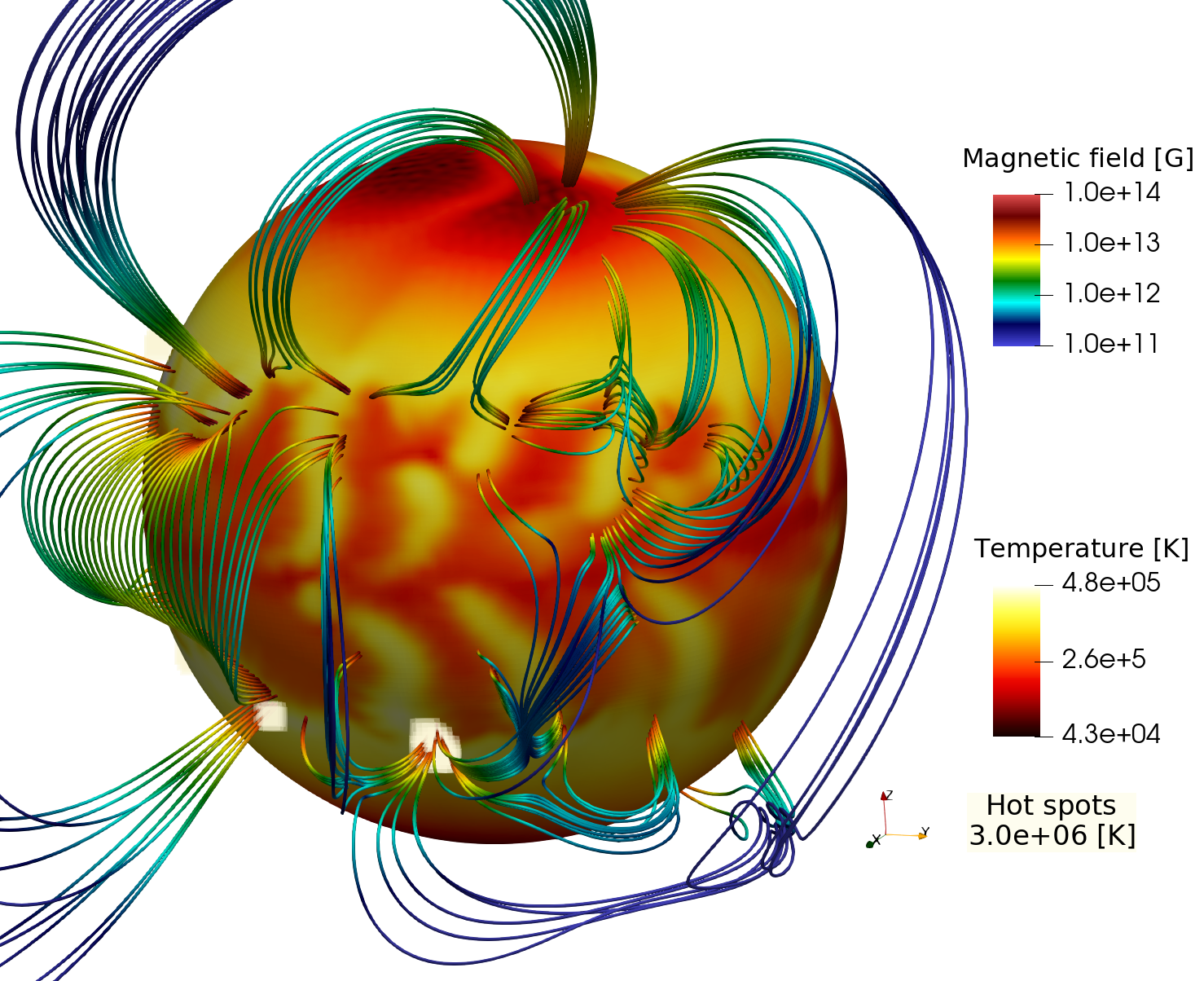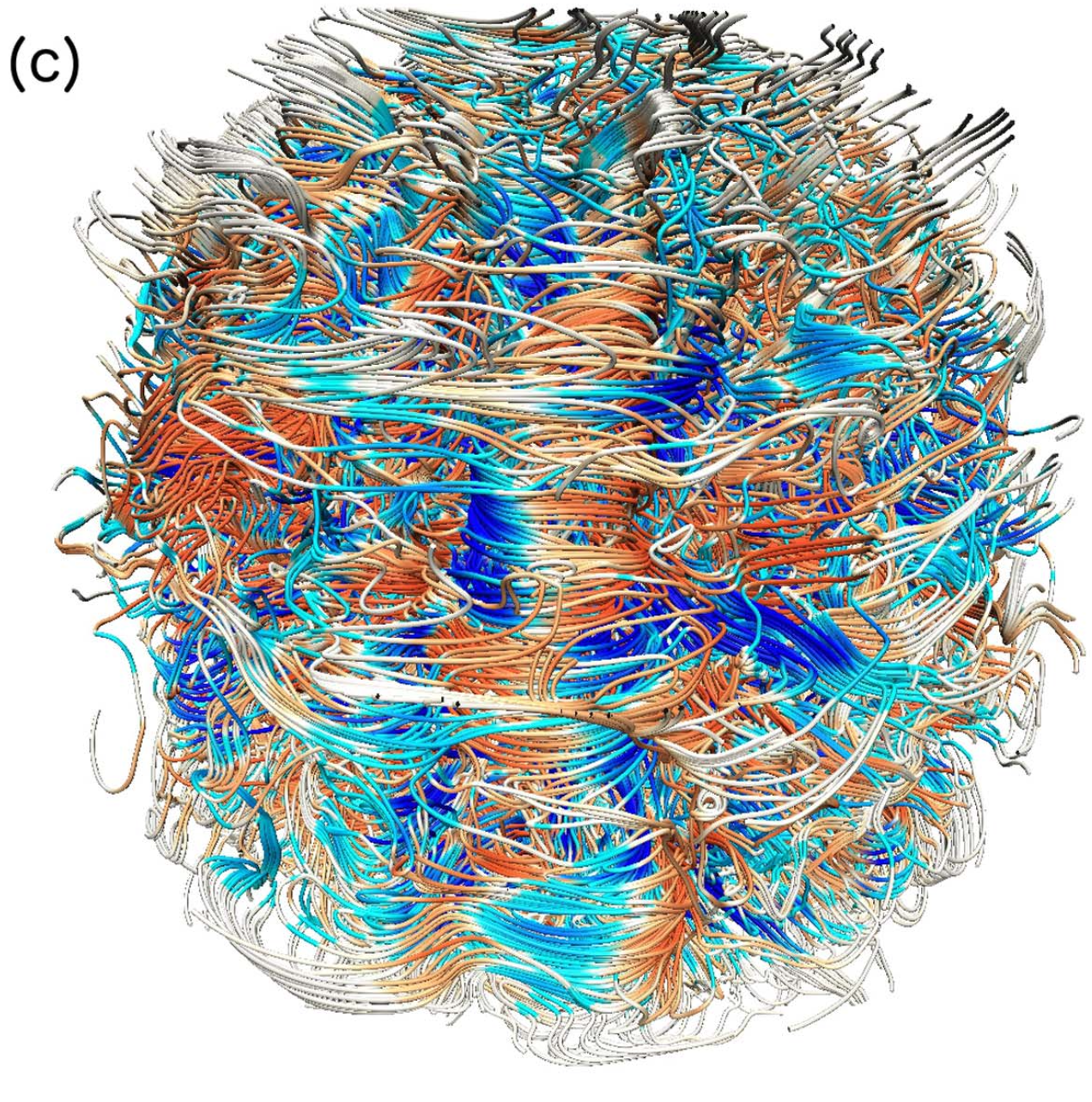Dynamo theory
Dynamo action is a mechanism enabling a conducting fluid that harbours three-dimensional and complex enough motions to amplify and self-sustain its own magnetic field. The latter generally have feedback reaction on the fluid motions, which makes the study of dynamo very challenging. The diversity of processes causing these complex motions differentiate the variety of dynamo mechanisms, which produce the majority of magnetic fields observed in the Universe. My analytical and numerical work focuses one particular dynamo, called the Tayler-Spruit dynamo, which is driven by the combination of large-scale differential rotation and the Tayler instability (instability of a strong large-scale toroidal magnetic field). This mechanism is suspected to produce very efficient angular momentum transport and may produce the extreme magnetic fields of magnetars in proto-neutron stars spun up by supernova fallback. Here are some good reviews:

